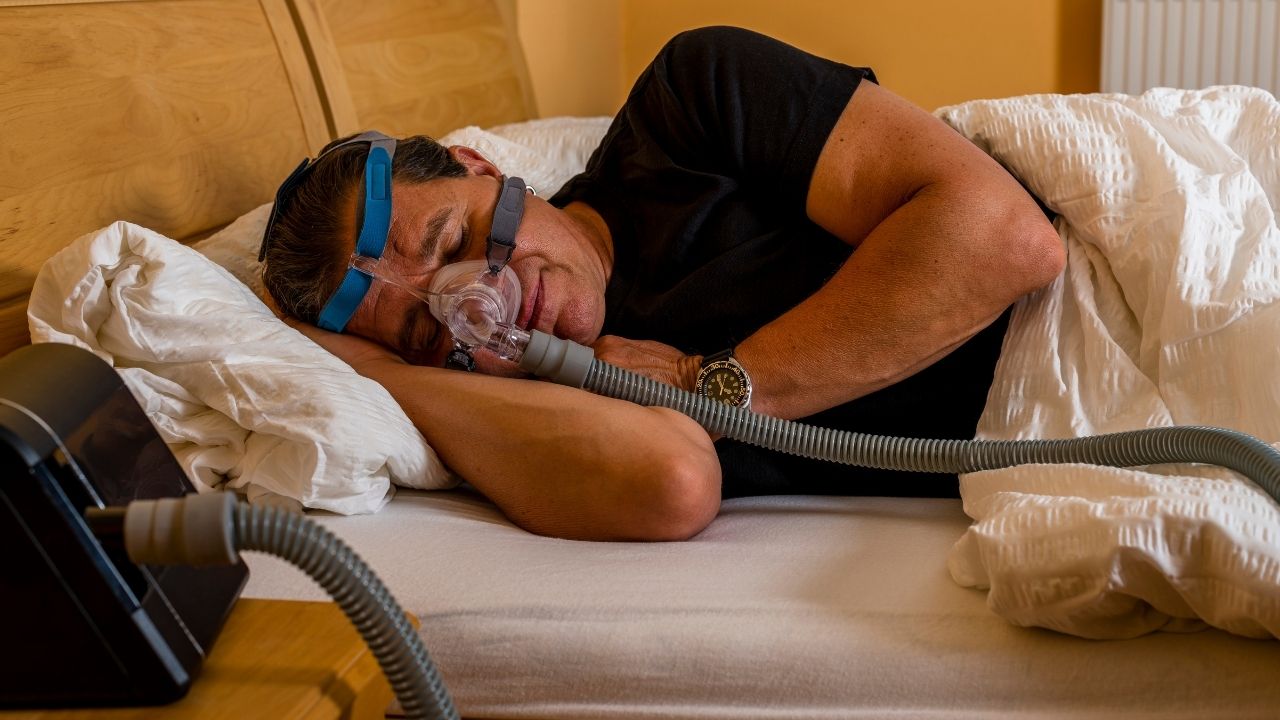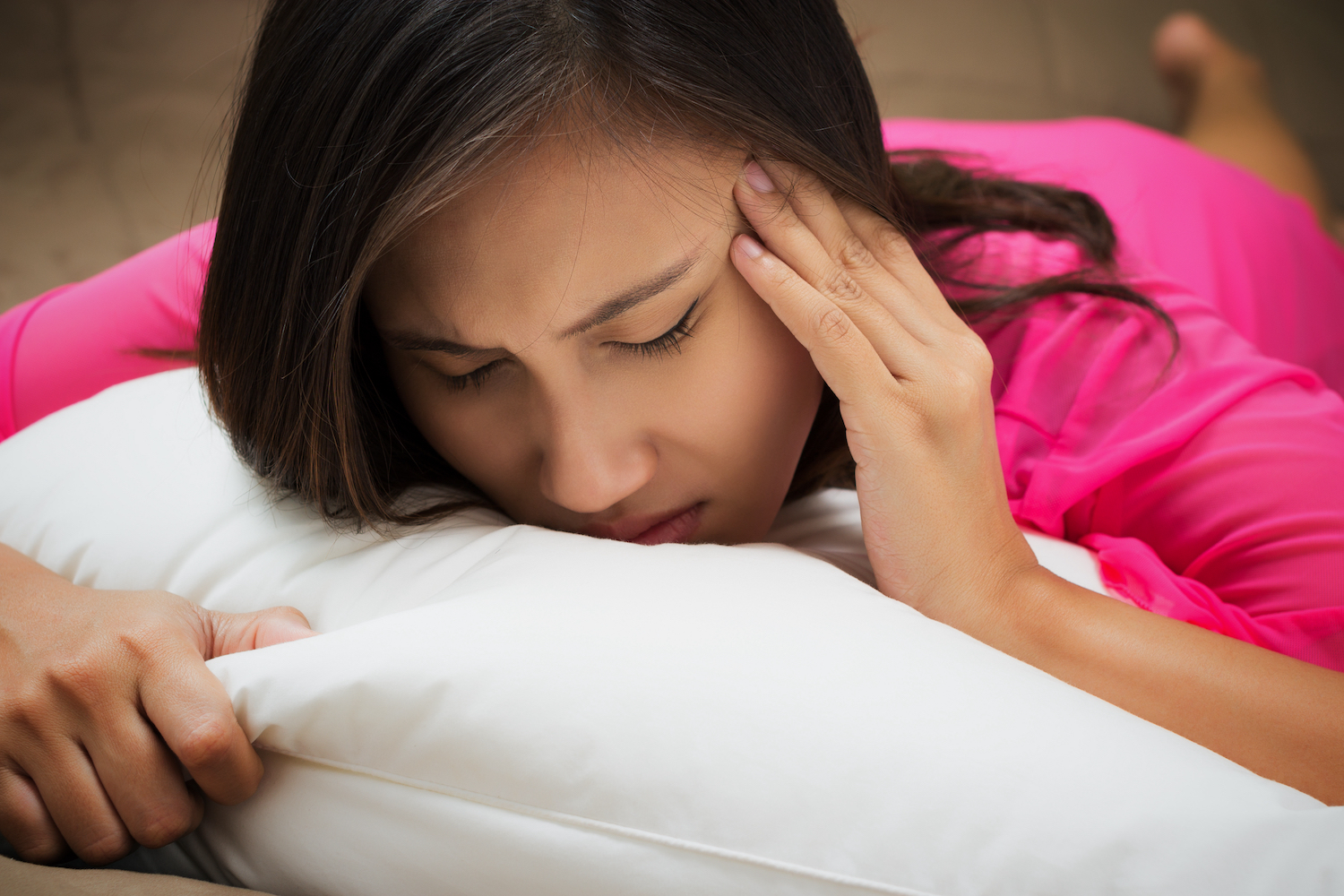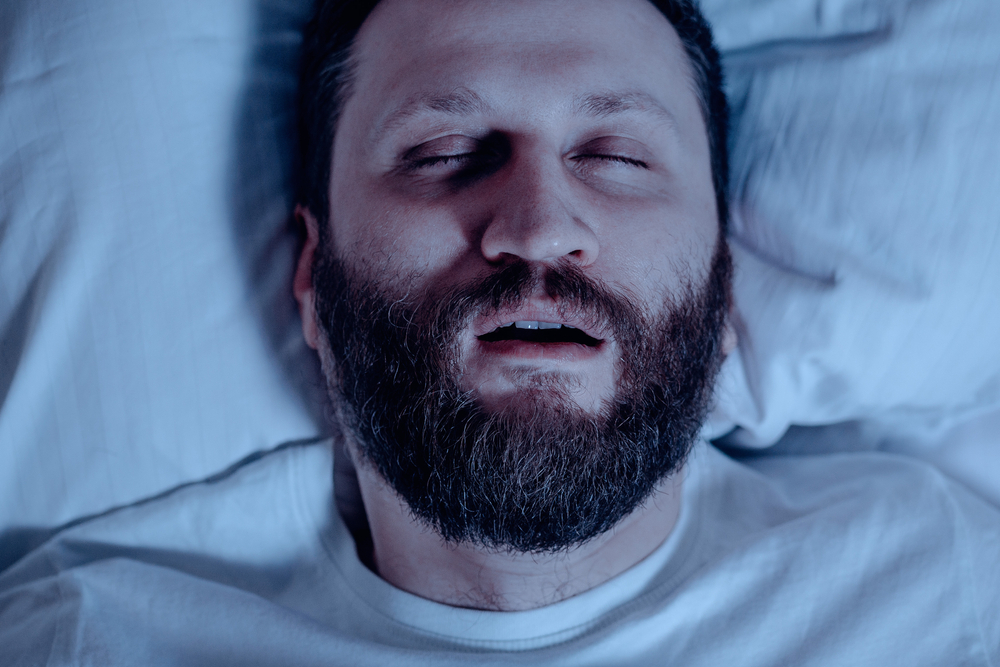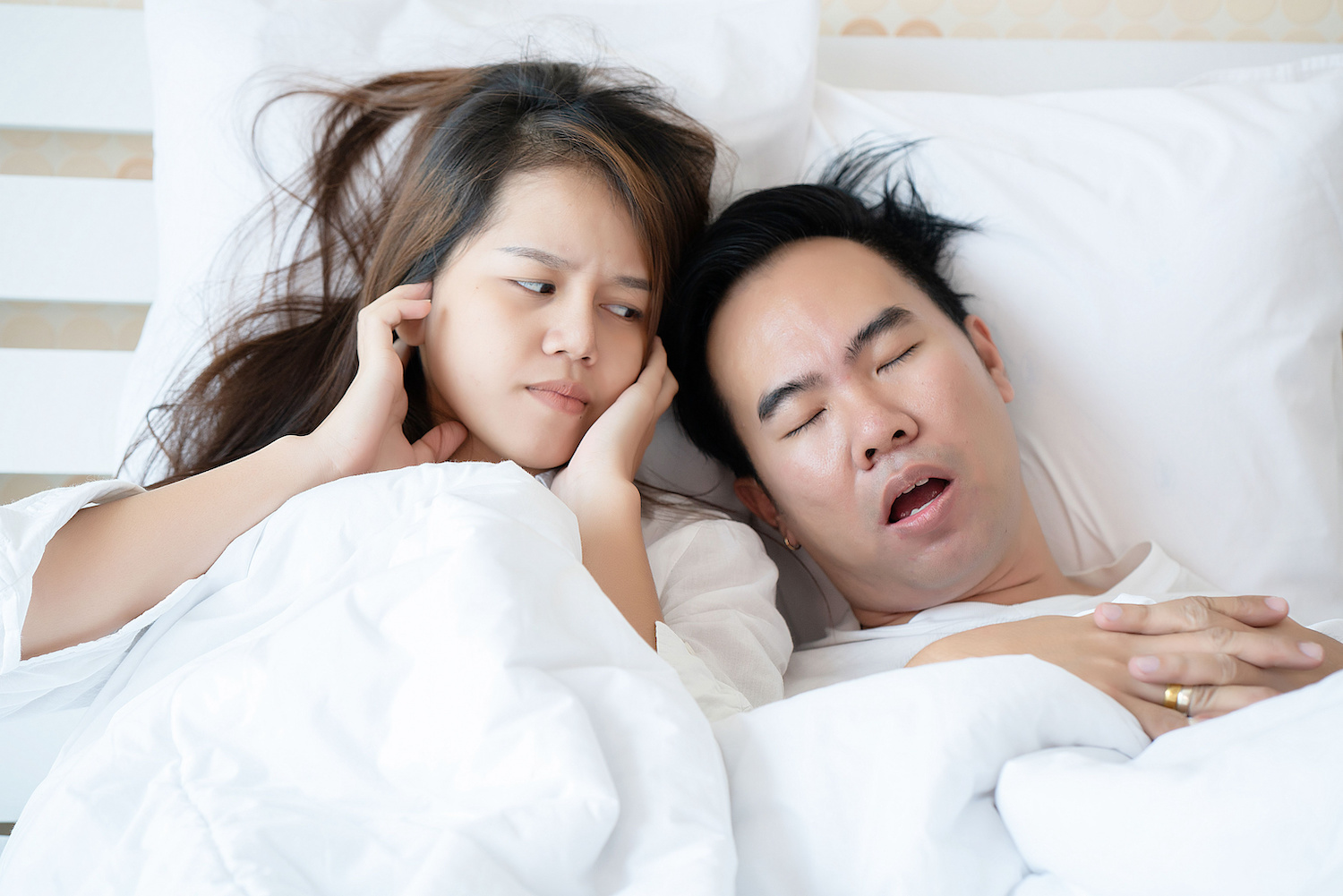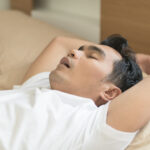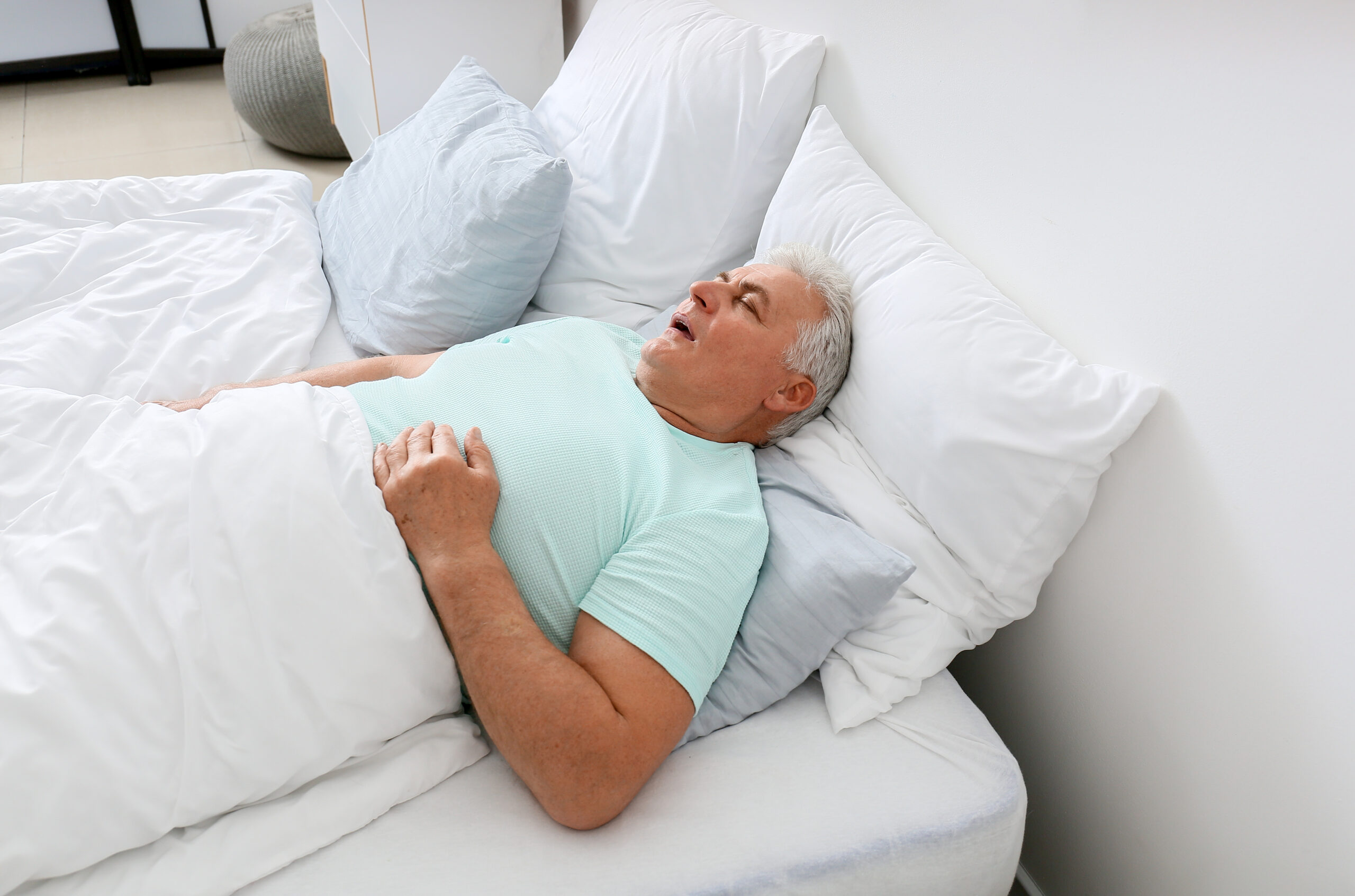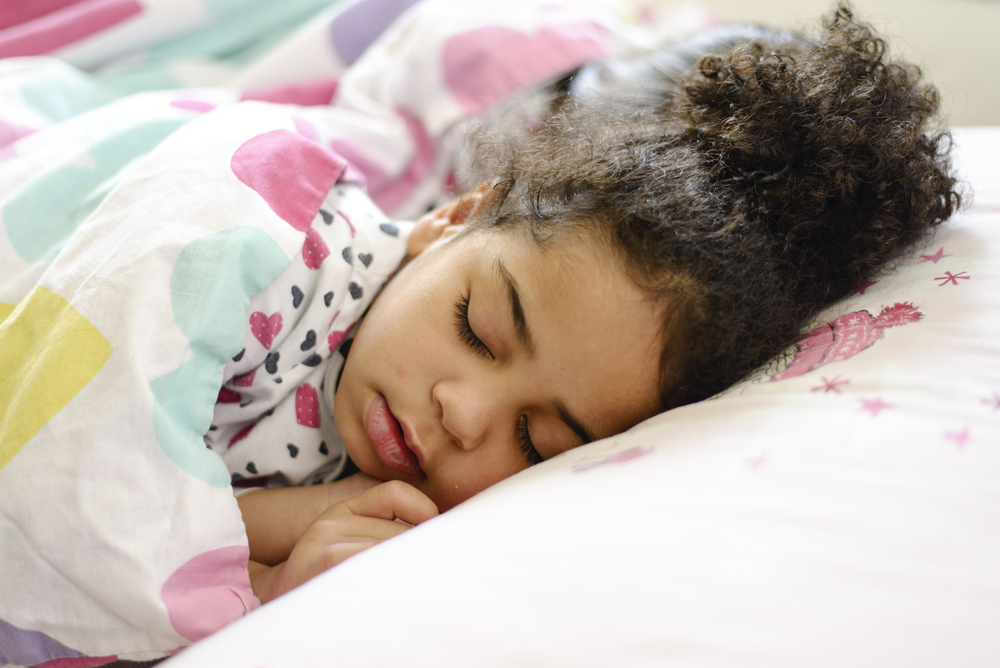Sleep apnea is a common disorder in which breathing starts and stops or gets very shallow while a person sleeps. Symptoms of sleep apnea include loud snoring and gasping sounds during sleep as well as waking up with a headache.
Untreated sleep apnea can leave people feeling unrefreshed in the morning, making it difficult to function throughout the day. It can also lead to complications like an increased risk of motor vehicle accidents and health problems such as diabetes and heart issues.
As many as 30% of Americans have sleep apnea, but most go undiagnosed. Familiarity with the symptoms of sleep apnea can help you and your bed partner know when it is time to talk with a doctor about any symptoms that might be due to sleep apnea.
Common Symptoms of Sleep Apnea
A variety of symptoms can develop in people with sleep apnea and can vary based on the severity of a person’s sleep apnea and the type of sleep apnea a person has.
There are two types of sleep apnea. Central sleep apnea (CSA), the less common form of the disorder, occurs when the brain doesn’t alert the respiratory muscles to breathe. Obstructive sleep apnea (OSA) is much more common than CSA and happens when the airway is repetitively partially or fully blocked by loose tissues in the mouth, nose, or throat.
Sometimes a person’s bed partner notices the symptoms of OSA. In other cases, a person with undiagnosed OSA notices changes in their sleep quality or how well they function during the day.
Loud Snoring
Loud snoring is one of the most common symptoms of OSA. While many people snore occasionally, not all people that snore have sleep apnea.
Snoring happens when air passes through narrowed soft tissues of the upper airway causing vibration of the uvula and soft palate. The flapping of soft tissues coming into contact with each other can cause rumbling and other sounds associated with snoring. Aside from sleep apnea, there are many other possible causes of snoring.
Loud snoring alone is not enough to make a diagnosis of sleep apnea. Doctors review a person’s health history and ask questions to understand their sleep health which often includes talking with a bed partner. A sleep study is typically ordered if a doctor suspects sleep apnea.
Choking or Gasping for Air
People with obstructive sleep apnea may gasp for air or choke leading to interruptions in breathing. In rare cases, a person may wake struggling to breathe. The choking or gasping that is commonly associated with sleep apnea may only be noticeable to a bed partner.
Research suggests that gasping or choking during sleep may be one of the most important signs that a person needs to be referred for a sleep study.
Daytime Sleepiness
Difficulty staying awake during the day is another common symptom of sleep apnea. Daytime sleepiness most commonly manifests during situations like reading a book, being a passenger in a car, or attending a meeting where you are not presenting.
Daytime sleepiness is different from fatigue, which is generally described as having low mental or physical energy to make it challenging to get through the day. People with obstructive sleep apnea might have fatigue along with symptoms of daytime sleepiness. However, it is daytime sleepiness, and not fatigue, that is one of the hallmark symptoms of OSA.
Morning Headaches
Morning headaches are common in sleepers affected by untreated obstructive sleep apnea. Up to 30% of people with obstructive sleep apnea report waking up with headaches.
Headaches associated with OSA typically occur most, if not all, days and can last for a few hours after waking up. Pain usually occurs in the front part of the head on both sides and can feel like the head is being squeezed.
Other Symptoms
Other symptoms may develop in people with untreated OSA. These symptoms include the frequent need to urinate at night, difficulty staying asleep, and changes in thinking and mood.
- Frequent urination: People with OSA may urinate frequently during the night if they wake repeatedly because of breathing interruptions.
- Nighttime awakenings: Roughly one-third of people with sleep apnea have a hard time staying asleep and wake many times throughout the night. This symptom occurs more often in women with sleep apnea.
- Cognitive changes: OSA can lead to changes in mood and how well the mind functions. Symptoms can include irritability, depression, and moodiness as well as trouble with memory, attention, and learning.
Symptoms in Children
While children and adults experience some of the same symptoms of OSA, a handful of symptoms are unique to children with sleep apnea.
Obstructive sleep apnea develops in less than 5% of children and is most frequently diagnosed in children between the ages of 2 and 6 years old.
Children experience many of the same symptoms of obstructive sleep apnea as adults, including:
- Loud snoring
- Pauses in breathing
- Coughing or choking during sleep
- Morning headaches
- Daytime sleepiness
However, children with untreated OSA exhibit a range of daytime symptoms that are not seen in adults. Instead of manifesting sleepiness during the day, children often show signs of hyperactivity. For example, children can misbehave or struggle in school due to difficulty controlling their behavior and paying attention. They sometimes have a hard time controlling their emotions or mood. Bedwetting, sleepwalking, and sleep terrors can also arise in children with OSA.
When Should I See a Doctor?
If you or a bed partner notice the symptoms of sleep apnea, or if other concerns about sleep health arise, talk with your healthcare provider. They may ask you a series of questions about your sleep and health history or order a sleep study to determine the cause of any sleep disturbances.
If you receive a diagnosis of sleep apnea, then your health care provider may talk with you about making lifestyle changes. You may also benefit from using a CPAP machine or another treatment for sleep apnea.
It is important to regularly check in with a health care provider to discuss whether or not treatment is helping your symptoms and if any other sleep issues develop.




